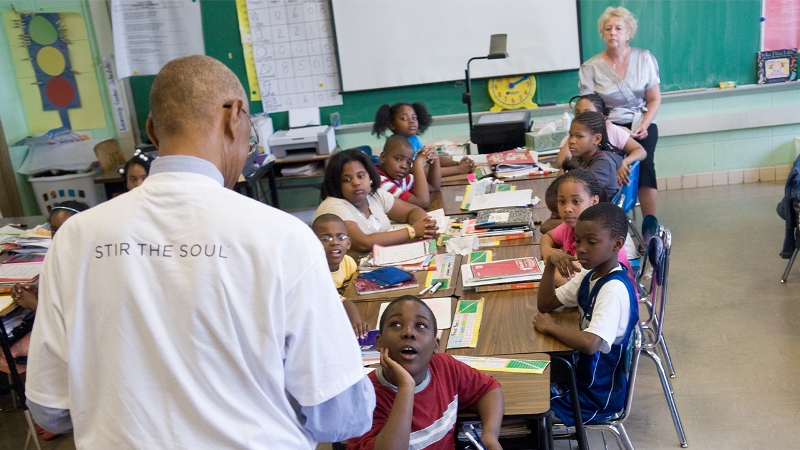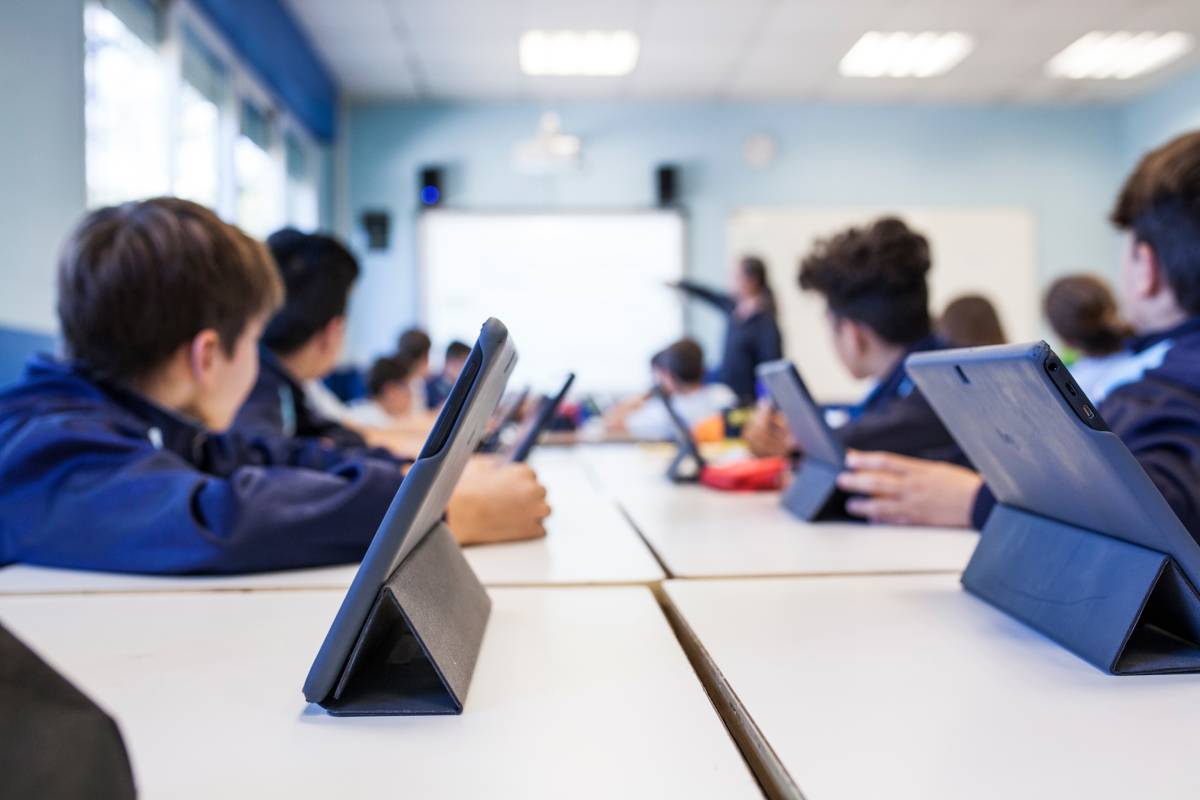Improve Your Child’s Performance with Primary Science Tuition Singapore
Improve Your Child’s Performance with Primary Science Tuition Singapore
Blog Article
Discovering the Various Training Approaches in Main Science Education Today
The landscape of primary science education is evolving, with various mentor methods obtaining prominence in modern class. Inquiry-based understanding, hands-on experiments, and the integration of technology are redefining just how educators engage young minds. Additionally, collaborative techniques and set apart guideline are being used to satisfy the varied requirements of students, improving both engagement and understanding. As we check out these techniques, inquiries arise concerning their performance and the ramifications for future educational techniques. What might these shifts in technique mean for the future generation of students?
Inquiry-Based Learning
Inquiry-Based Understanding (IBL) is an instructional method that urges pupils to explore scientific concepts via wondering about, examination, and hands-on testing. This approach stresses the role of trainees as active individuals in their knowing, advertising critical reasoning and problem-solving skills. By engaging with real-world concerns, students come to be determined and curious, which enhances their understanding of clinical concepts.
In IBL, instructors work as facilitators, guiding pupils as they navigate their inquiries instead than supplying info straight. This student-centered technique permits for distinction, accommodating various finding out styles and speeds. Trainees develop abilities in formulating hypotheses, developing experiments, and assessing data, which are crucial for clinical proficiency.
Furthermore, IBL promotes collaboration amongst pupils, encouraging them to share concepts and findings. This cumulative query promotes social skills and a feeling of area within the classroom. Moreover, the procedure of query urges strength, as students discover to accept failing as a stepping rock toward understanding.
Hands-On Experiments
Hands-on experiments are a vital element of effective scientific research education and learning, matching the concepts of inquiry-based understanding. These experiments allow pupils to involve directly with scientific ideas, fostering a much deeper understanding with experiential learning. By manipulating products and observing end results, young students can comprehend abstract theories in concrete means.
Such activities advertise crucial reasoning and problem-solving abilities, as pupils assume outcomes, conduct experiments, and examine outcomes. This procedure encourages them to ask questions, improve their understanding, and develop a scientific state of mind. Hands-on experiments can be tailored to diverse learning designs, making certain that all pupils have the chance to involve meaningfully with the web content.
Additionally, hands-on experiments usually encourage partnership amongst peers, advertising synergy and communication abilities. Operating in teams makes it possible for trainees to share ideas, discuss findings, and learn from each other, which enhances their overall academic experience.
Including hands-on experiments right into the primary science curriculum not just improves the discovering setting yet likewise grows a long-lasting rate of interest in science. By proactively taking part in their education and learning, pupils are extra likely to create an interest for clinical query that expands beyond the class.

Technology Assimilation
Integrating innovation right into main scientific research education and learning has ended up being progressively vital in cultivating trainee interaction and enhancing discovering results. The usage of electronic devices, such as interactive simulations, virtual labs, and instructional software program, gives trainees with opportunities to check out clinical principles in cutting-edge means. These sources help with a deeper understanding of complicated topics by allowing students to picture and adjust variables that would be not practical in a typical class setup.
Furthermore, technology combination urges customized discovering experiences. Students can advance at their very own pace, revisiting difficult ideas via multimedia sources, which accommodate different knowing styles. This flexibility not just sustains individual development yet also cultivates a feeling of autonomy in students.
In addition, modern technology acts as a bridge to real-world scientific research, click for source linking pupils with present research study and professional contributions. Accessibility to scientific journals and online databases broadens pupils' viewpoints on clinical inquiry and fosters essential believing skills.
Collaborative Discovering
Collective knowing plays a vital duty in main scientific research education and this learning by promoting team effort and interaction skills amongst pupils. This strategy motivates students to function together, share knowledge, and take part in analytical, which enhances their understanding of clinical principles. By joining team tasks, pupils learn to articulate their ideas, pay attention to diverse viewpoints, and discuss remedies, every one of which are vital abilities in both academic and real-world contexts.

Research study indicates that collective understanding can result in boosted motivation and involvement in science topics, as pupils discover enjoyment in shared experiences (primary science tuition Singapore). Furthermore, this technique prepares trainees for future collaborative endeavors, outfitting them with the abilities required for effective teamwork in college and specialist atmospheres. Inevitably, accepting collaborative knowing in main science education and learning can considerably enrich the discovering experience and promote a much deeper understanding of scientific inquiry
Set Apart Guideline

Distinguished direction can manifest in numerous methods, such his explanation as varying the material, procedures, or products of knowing. Teachers may utilize tiered tasks that supply differing levels of intricacy, enabling trainees to work at their particular preparedness levels. Additionally, adaptable organizing methods can help with partnership amongst trainees with various abilities, promoting peer knowing.
Assessment plays a vital function in this strategy, as it notifies instruction and aids educators understand each pupil's distinct requirements. Formative assessments, such as quizzes and monitorings, can lead instructors in changing their methods to boost discovering results. primary science tuition Singapore. Eventually, by carrying out distinguished instruction in main scientific research education, teachers can cultivate an extra fair and efficient discovering setting, equipping all pupils to reach their full potential in recognizing clinical phenomena
Conclusion
In summary, the diverse training approaches in key science education and learning, including inquiry-based discovering, hands-on experiments, modern technology assimilation, joint learning, and separated direction, jointly add to a more reliable understanding setting. These techniques advertise important reasoning, analytical skills, and a much deeper understanding of scientific ideas. By implementing these approaches, teachers can develop interesting and supportive class that address the diverse needs of students, eventually fostering a lifelong interest in scientific research and improving academic achievement.
Inquiry-Based Discovering (IBL) is an instructional technique that motivates pupils to explore clinical principles via questioning, investigation, and hands-on testing.Joint understanding plays a crucial duty in key science education and learning by promoting teamwork and interaction abilities among pupils.Study indicates that joint discovering can lead to increased inspiration and interaction in scientific research subjects, as students discover satisfaction in common experiences.In cultivating an inclusive learning atmosphere, set apart guideline emerges as a crucial strategy to accommodate the diverse demands and abilities of pupils in primary scientific research education. Ultimately, by implementing differentiated guideline in main scientific research education and learning, instructors can cultivate an extra reliable and fair learning environment, encouraging all pupils to reach their full possibility in recognizing clinical sensations.
Report this page